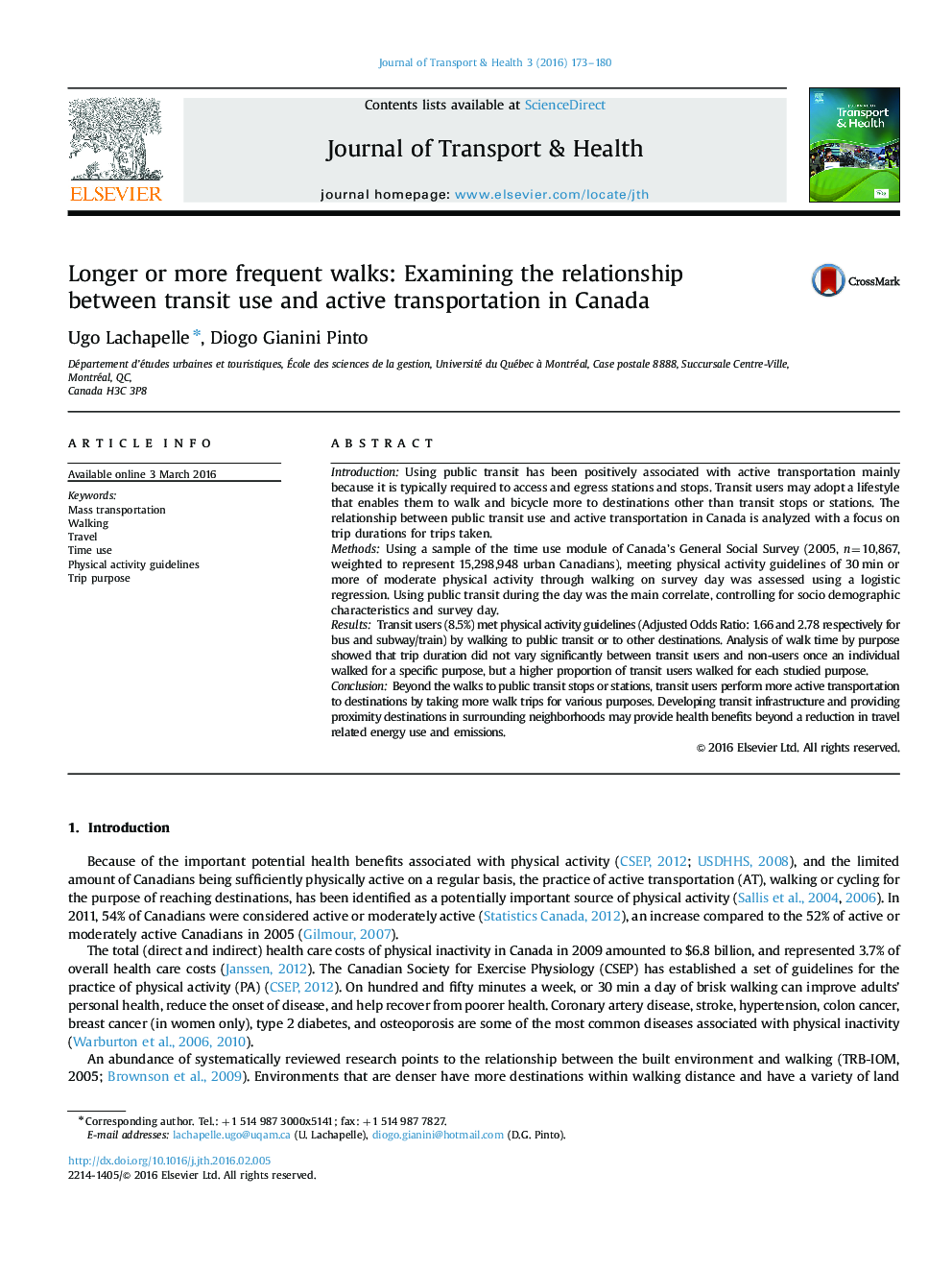| کد مقاله | کد نشریه | سال انتشار | مقاله انگلیسی | نسخه تمام متن |
|---|---|---|---|---|
| 5117820 | 1378138 | 2016 | 8 صفحه PDF | دانلود رایگان |
- Analysis of the relationship between transit use and walking not related to transit trips.
- The time use module of Canada's General Social Survey (2005) is used.
- Transit users had higher Odds Ratio of walking 30Â min, especially if they used the subway.
- A higher proportion of transit users walked for each purpose on the survey day.
- Trip duration do not vary significantly between walking transit users and non-users.
IntroductionUsing public transit has been positively associated with active transportation mainly because it is typically required to access and egress stations and stops. Transit users may adopt a lifestyle that enables them to walk and bicycle more to destinations other than transit stops or stations. The relationship between public transit use and active transportation in Canada is analyzed with a focus on trip durations for trips taken.MethodsUsing a sample of the time use module of Canada's General Social Survey (2005, n=10,867, weighted to represent 15,298,948 urban Canadians), meeting physical activity guidelines of 30Â min or more of moderate physical activity through walking on survey day was assessed using a logistic regression. Using public transit during the day was the main correlate, controlling for socio demographic characteristics and survey day.ResultsTransit users (8.5%) met physical activity guidelines (Adjusted Odds Ratio: 1.66 and 2.78 respectively for bus and subway/train) by walking to public transit or to other destinations. Analysis of walk time by purpose showed that trip duration did not vary significantly between transit users and non-users once an individual walked for a specific purpose, but a higher proportion of transit users walked for each studied purpose.ConclusionBeyond the walks to public transit stops or stations, transit users perform more active transportation to destinations by taking more walk trips for various purposes. Developing transit infrastructure and providing proximity destinations in surrounding neighborhoods may provide health benefits beyond a reduction in travel related energy use and emissions.
Journal: Journal of Transport & Health - Volume 3, Issue 2, June 2016, Pages 173-180
